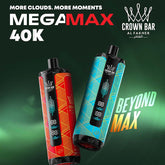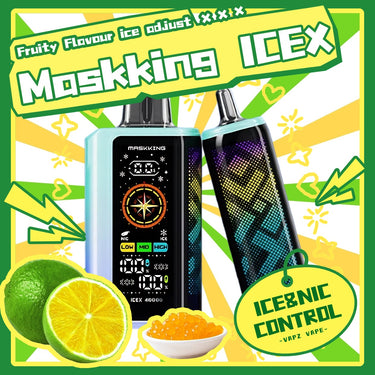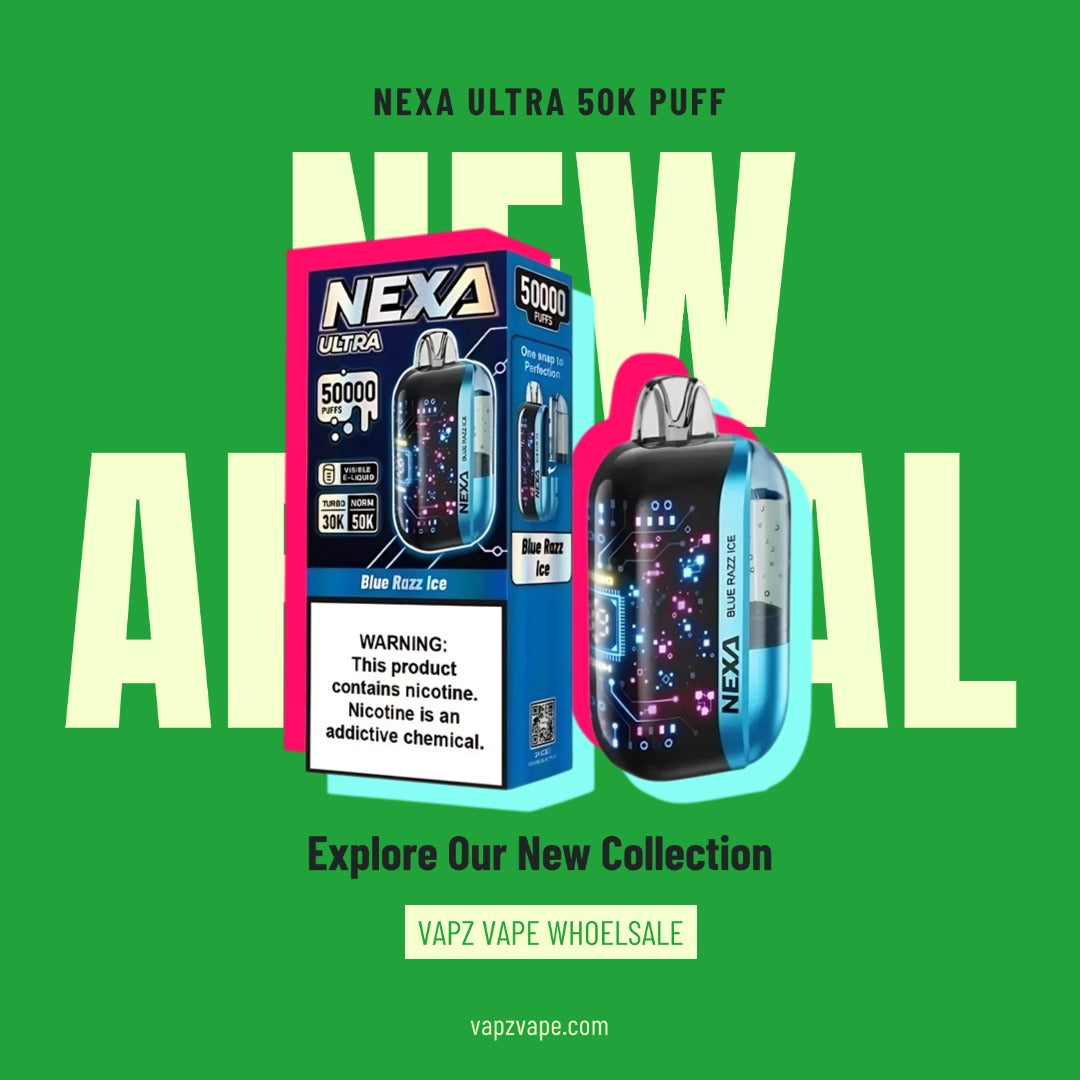Zyn Shortages Explained: Causes, Impact, and What You Need to Know
In recent months, Zyn users have faced an unexpected hurdle: product shortages that have left many searching for answers. As one of the most popular nicotine pouches on the market, Zyn's sudden scarcity has raised eyebrows and sparked questions. What lies behind this disruption? In this article, we will delve into the root causes of the Zyn shortages, exploring everything from supply chain challenges to increased demand and regulatory changes. We'll also examine the impact on users and retailers alike, providing insights into how this situation affects your access to your favorite products. Whether you're a devoted fan or simply curious about the current trends in the nicotine market, understanding the complexities of these shortages is essential. Join us as we unpack the intricacies of the Zyn shortages and equip you with the knowledge you need to navigate these challenging times.
Understanding Zyn: What It Is and Its Popularity
Zyn is a brand of nicotine pouches that has taken the market by storm, becoming a favorite among users seeking a smoke-free and spit-free alternative to traditional tobacco products. These small, discreet pouches are placed between the gum and lip, delivering nicotine without the need for combustion or inhalation. The appeal of Zyn lies in its convenience, variety of flavors, and the ability to use it virtually anywhere without the social stigma associated with smoking or chewing tobacco.
The rise in popularity of Zyn can be attributed to several factors, including the growing trend of harm reduction in the nicotine and tobacco industry. As awareness of the health risks associated with smoking increases, more individuals are turning to alternative nicotine products to satisfy their cravings. Zyn fits perfectly into this niche, offering a seemingly less harmful way to consume nicotine. Additionally, the brand has effectively marketed its products to both current smokers looking for alternatives and new users intrigued by the modern, clean image of nicotine pouches.
Moreover, Zyn's success is bolstered by its wide availability and the extensive range of flavors and nicotine strengths it offers. From mint to citrus to coffee, Zyn provides options that cater to diverse tastes, making it an attractive choice for many. This variety has not only helped Zyn capture a significant market share but also fostered a loyal customer base that spans various demographics. However, this popularity has also contributed to the very shortages that users are now grappling with.
Overview of Recent Zyn Shortages
In recent months, Zyn enthusiasts have been met with empty shelves and out-of-stock notifications, a situation that has left many frustrated and seeking answers. The shortages have been noticeable across different regions, affecting both online and brick-and-mortar retailers. This sudden scarcity has been particularly surprising given Zyn's previously reliable availability and the brand's strong market presence.
The shortage has not been uniform, with some areas experiencing more severe disruptions than others. Reports indicate that certain flavors and nicotine strengths are harder to find, suggesting that the issue may be more complex than a simple supply-demand imbalance. As users scramble to find their preferred products, many have turned to social media and online forums to share their experiences and seek advice from fellow consumers.
This widespread impact has sparked a flurry of speculation about the underlying causes of the shortage. Some users attribute it to increased demand, while others point to potential production or distribution issues. Retailers, too, have been affected, with many struggling to keep up with customer inquiries and maintain stock levels. The situation has underscored the importance of understanding the factors contributing to the shortage, as well as the broader implications for the nicotine pouch market.
Impact on Consumers: What Users Are Experiencing
For Zyn users, the shortages have led to a range of inconveniences and frustrations. Many have found it difficult to locate their preferred flavors and nicotine strengths, leading some to purchase products they wouldn't normally choose or to use alternatives that don't fully meet their needs. This has disrupted the routines of loyal customers who rely on Zyn as their primary source of nicotine, causing dissatisfaction and inconvenience.
The scarcity has also sparked a surge in prices for the available stock. Some retailers have increased prices in response to the high demand and limited supply, making it more expensive for consumers to obtain their favorite products. This price hike has added to the financial burden on users, particularly those who regularly consume Zyn. For some, the increased cost may lead to a reduction in usage or a search for more affordable alternatives.
The uncertainty surrounding the availability of Zyn has also contributed to anxiety and concern among users. Many are unsure when their preferred products will be back in stock, leading to a sense of instability and frustration. This uncertainty can be particularly challenging for individuals who use Zyn as part of their strategy to quit smoking or reduce their tobacco consumption, as the lack of reliable access to their chosen product can hinder their progress.
The Supply Chain Disruptions Affecting Zyn Production
Supply chain disruptions have been a significant factor in the Zyn shortage. The global pandemic has caused widespread interruptions in manufacturing and transportation, affecting the availability of raw materials and finished goods across various industries. For Zyn, these disruptions have resulted in delays in production and shipping, making it challenging to maintain consistent supply levels.
One of the key challenges has been the availability of raw materials needed to produce nicotine pouches. The pandemic has led to shortages of certain ingredients, as well as delays in obtaining them from suppliers. This has slowed down the manufacturing process, limiting the number of products that can be produced and shipped to retailers. Additionally, transportation issues, such as port congestion and reduced shipping capacity, have further complicated the situation, leading to longer lead times and increased costs.
The interconnected nature of global supply chains means that disruptions in one area can have a cascading effect on others. For example, delays in obtaining packaging materials can halt production even if the other ingredients are available. Similarly, transportation bottlenecks can lead to stock shortages in one region while products are available in another. These complexities have made it challenging for Zyn to maintain a steady supply of products, contributing to the shortages experienced by consumers.
Regulatory Challenges and Their Role in the Shortage
The regulatory landscape for nicotine products has become increasingly complex, posing challenges for manufacturers like Zyn. Governments around the world are implementing stricter regulations to control the production, distribution, and marketing of nicotine products, with the aim of reducing their health risks and preventing underage use. While these regulations are important for public health, they can also create hurdles for companies trying to navigate compliance requirements.
One of the main regulatory challenges facing Zyn is the need to comply with different rules and standards across various jurisdictions. This can involve extensive paperwork, testing, and certification processes, which can slow down production and distribution. For example, certain regions may have specific requirements for labeling, packaging, or ingredient disclosure, all of which must be met before products can be sold. These regulatory requirements add to the production timeline and can contribute to delays in getting products to market.
Additionally, changes in import/export policies and tariffs can further complicate the situation. As countries adjust their trade policies and impose new restrictions, manufacturers must adapt to these changes to ensure their products can be legally imported and sold. This can involve renegotiating contracts, adjusting pricing, and finding new distribution channels, all of which take time and resources. These regulatory challenges have added to the complexity of maintaining a steady supply of Zyn products, contributing to the shortages experienced by consumers.
Alternatives to Zyn During the Shortage
For Zyn users facing shortages, exploring alternative nicotine products can be a practical solution. Several other brands offer similar nicotine pouches that can serve as substitutes. Brands like On! and Velo provide a range of flavors and nicotine strengths, making them viable options for users looking to maintain their nicotine intake without resorting to smoking or chewing tobacco. These alternatives are widely available and can help bridge the gap until Zyn products are back in stock.
Another option for users is to consider other forms of nicotine replacement therapy (NRT). Products like nicotine gum, patches, and lozenges are readily available and can provide a controlled dose of nicotine to help manage cravings. While these products may not offer the same experience as nicotine pouches, they can be effective in supporting individuals who are trying to quit smoking or reduce their tobacco use. Consulting with a healthcare provider can help users choose the best NRT option for their needs.
For those who prefer a more natural approach, herbal and non-nicotine pouches are also available on the market. These products typically contain herbal blends or other ingredients designed to mimic the sensation of using nicotine pouches without the addictive substance. While they may not satisfy nicotine cravings, they can provide a similar oral fixation and help users transition away from nicotine dependence. Exploring these alternatives can provide temporary relief and support during the Zyn shortage.
How Retailers Are Coping with Zyn Supply Issues
Retailers have been significantly impacted by the Zyn shortages, facing challenges in meeting customer demand and maintaining stock levels. To cope with the supply issues, many retailers have implemented various strategies to manage inventory and keep their customers informed. Some have increased their orders in anticipation of high demand, while others have diversified their product offerings to include alternative nicotine pouches and related products.
Communication has been key for retailers navigating the Zyn shortage. Many have proactively reached out to their customers through email newsletters, social media, and in-store signage to provide updates on product availability and expected restock dates. By keeping customers informed, retailers can manage expectations and reduce frustration. Additionally, some retailers have implemented waitlists or pre-order systems, allowing customers to reserve products as soon as they become available.
Retailers are also exploring new distribution channels and suppliers to mitigate the impact of the shortages. This may involve partnering with different manufacturers or wholesalers to secure alternative products or adjusting their supply chain logistics to ensure more reliable deliveries. These efforts are aimed at minimizing the disruption to their business and maintaining customer satisfaction during the ongoing Zyn shortages.
Future Outlook: Will Zyn Shortages Persist?
The future outlook for Zyn shortages remains uncertain, as several factors continue to influence the availability of nicotine pouches. While efforts are being made to address supply chain disruptions and regulatory challenges, it may take time for these measures to translate into consistent product availability. The ongoing global pandemic adds another layer of uncertainty, as it continues to impact manufacturing and distribution networks worldwide.
However, there are reasons to be optimistic about the future. As manufacturers adapt to the new regulatory landscape and invest in expanding production capacity, we can expect improvements in the supply of nicotine pouches. Companies are also likely to continue innovating and optimizing their supply chains to reduce bottlenecks and ensure more reliable deliveries. These efforts should help mitigate the impact of future disruptions and improve the availability of Zyn products.
In the long term, the market for nicotine pouches is expected to grow, driven by increasing demand for smoke-free and harm-reduction alternatives. This growth will likely attract more competition and investment, leading to greater product diversity and improved supply chain resilience. While short-term shortages may persist, the overall trend points toward a more stable and accessible market for nicotine pouches in the future.
Conclusion: Navigating the Zyn Shortage and Staying Informed
Navigating the Zyn shortage can be challenging for consumers, but staying informed and exploring alternatives can help mitigate the impact. Understanding the root causes of the shortages, including supply chain disruptions, increased demand, and regulatory challenges, provides valuable context for the current situation. By being aware of these factors, users can better manage their expectations and make informed decisions about their nicotine consumption.
Exploring alternative nicotine products and nicotine replacement therapies can provide temporary relief during the shortages. Brands like On! and Velo, as well as other forms of NRT, offer viable options for maintaining nicotine intake without resorting to smoking or chewing tobacco. Additionally, herbal and non-nicotine pouches can provide a similar experience without the addictive substance, supporting users in their efforts to reduce or quit nicotine use.
Staying connected with retailers and keeping an eye on updates regarding product availability can also help consumers navigate the shortages. Many retailers are actively communicating with their customers and implementing strategies to manage inventory and maintain satisfaction. By staying informed and exploring alternative options, users can better cope with the current Zyn shortages and continue their journey toward a healthier lifestyle.









